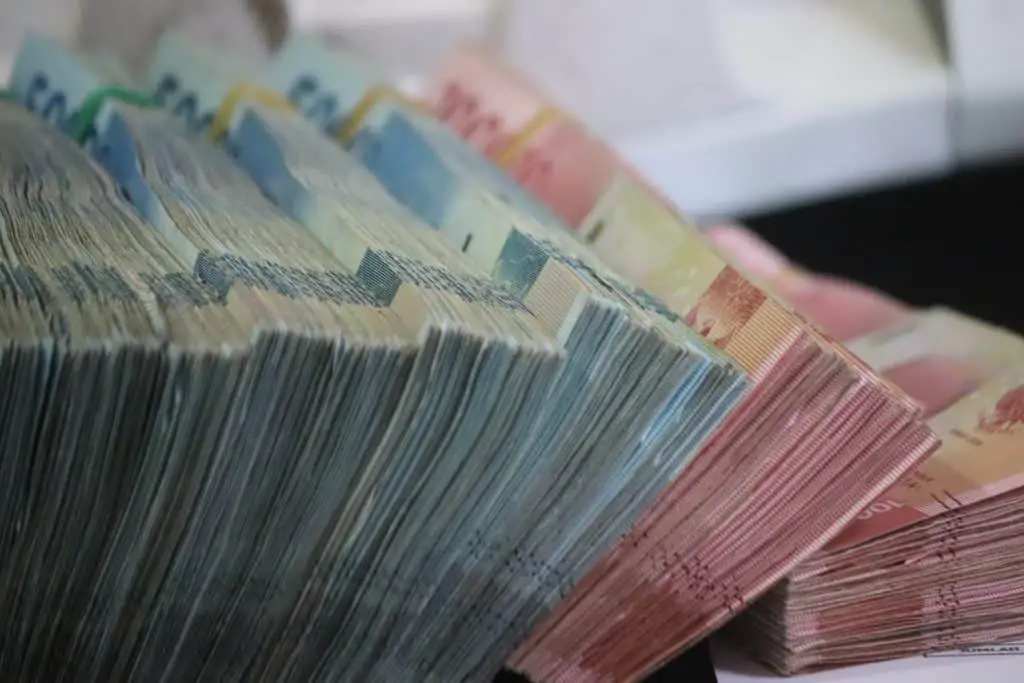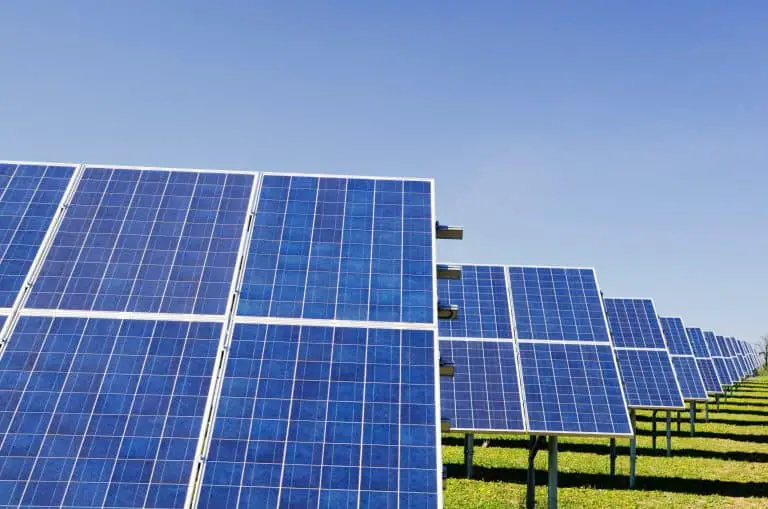How to Build a Solid Emergency Fund for Financial Independence
As a financial coach, I have seen first-hand how important having a solid emergency fund is.
An emergency fund is a safety net that can help you weather unexpected financial storms, from medical emergencies to job loss.
Building a solid emergency fund involves setting aside enough money to cover three to six months of living expenses in case of unexpected events, such as job loss or medical emergencies. This fund should be kept in a separate account but easily accessible when needed.
In this article, I will cover everything you need to know about how to build a solid emergency fund for financial independence.
Table of Contents

What is an emergency fund and why is it important?
An emergency fund is a sum of money that you set aside for unexpected expenses. It’s a safety net that can help you pay for things like medical bills, car repairs, or home repairs without dipping into your regular budget or going into debt.
Emergency funds are important because they provide a sense of financial security. When you have an emergency fund, you can rest easy knowing that you are prepared for unexpected expenses. It can also help you avoid taking on debt or relying on credit cards to cover unexpected expenses.
The benefits of having an emergency fund
Having an emergency fund can provide a number of benefits, including:
Peace of mind
When you have an emergency fund, you don’t have to worry about unexpected expenses derailing your finances. You can rest easy knowing that you are prepared for whatever comes your way.
Avoiding debt
If you don’t have an emergency fund, you may be forced to rely on credit cards or loans to cover unexpected expenses. This can lead to debt that can take years to pay off.
Flexibility
An emergency fund can give you the flexibility to take risks and pursue opportunities that you might not otherwise be able to. For example, if you have an emergency fund, you may be able to take a lower-paying job that you are more passionate about, or start your own business.
Better financial health
When you have an emergency fund, you are less likely to experience financial stress, which can have a negative impact on your overall health and well-being.
How to save for an emergency fund
Now that you understand the importance of an emergency fund, it’s time to start saving for one. Here are some tips how to build an emergency fund fast:
Set a goal
The first step in building an emergency fund is to set a goal. Decide how much you want to save and how long you want to take to save it.
Automate your savings
One of the easiest ways to save for an emergency fund is to automate your savings. Set up a direct deposit from your paycheck into a separate savings account.
Cut back on expenses
Another way to save for an emergency fund is to reduce expenses. Look for ways to reduce your spending, such as canceling subscriptions or eating out less often.
Use windfalls
Consider putting it towards your emergency fund if you receive a windfall, such as a tax refund or bonus.
Make it a priority
Finally, make saving for an emergency fund a priority. Treat it like any other bill you must pay, and make sure you contribute to it every month.
How much should you save in an emergency fund?
A common question when building an emergency fund is how much they should save. The answer to this question depends on your circumstances, but as a general rule, you should aim to save at least three to six months’ worth of living expenses.
In theory enough funds to last long enough to find another source of income, ride out any storms and emerge the other side without needing to go into debt.
To calculate your living expenses, add up all of your monthly bills and expenses, including rent or mortgage payments, utilities, groceries, and any other regular expenses that you have.
You may want to aim for a larger emergency fund if you have dependents or a fluctuating income.
Where to keep your emergency fund
Once you have saved up for an emergency fund, you need to decide where to keep it. Here are some options:
High-yield savings account
A high-yield savings account is a great option for an emergency fund. It offers a higher interest rate than a traditional savings account, which means your money will grow faster.
Certificate of deposit (CD)
A CD is a type of savings account that offers a fixed interest rate for a set period of time. While a CD may offer a higher interest rate than a savings account, it’s important to keep in mind that you won’t be able to access your money until the CD matures.
Premium bonds (In the UK)
In the UK you can use premium bonds as a place to store your emergcny fund.
Premium Bonds can be used as a form of an emergency fund, but there are some important things to consider before doing so. Premium Bonds are a type of investment offered by the UK government, where you can purchase bonds entered into a monthly prize draw to win tax-free prizes.
One benefit of using Premium Bonds as an emergency fund is that you can withdraw your money at any time without penalty. Additionally, there is a “chance” that you could win a large sum of money, which could be useful in an emergency situation.
When to use your emergency fund
Once you have saved up for an emergency fund, knowing when to use it is important. Here are some guidelines:
Medical emergencies
You can use your emergency fund to cover the costs if you have a medical emergency, such as an unexpected hospital stay or surgery.
Job loss
If you lose your job, your emergency fund can help you cover your expenses until you find a new job.
Home repairs
If you have a major home repair, such as a leaky roof or a broken furnace, your emergency fund can help you cover the costs.
Car repairs
If your car breaks down or needs major repairs, your emergency fund can help you cover the costs.
Common mistakes to avoid when building an emergency fund
While building an emergency fund is important, there are some common mistakes that you should avoid:
Not saving enough
One of the biggest mistakes that people make when building an emergency fund is not saving enough. Ensure you are saving enough to cover at least three to six months’ living expenses.
Using your emergency fund for non-emergencies
Another common mistake is using your emergency fund for non-emergencies, such as a vacation or a new TV. Your emergency fund should only be used for true emergencies.
Not replenishing your emergency fund
If you have to use your emergency fund, replenish it as soon as possible. You never know when you might need it again. Probably sooner than you think.
Additional ways to prepare for emergencies
While an emergency fund is an important part of being financially prepared, there are some additional steps you can take to prepare for emergencies:
Get insurance
Ensure you have adequate insurance coverage, including health, car, and home insurance.
Have a plan
Create a plan for what you will do in an emergency. This could include a plan for getting to work if your car breaks down.
Build a network
Build a network of friends, family and colleagues who can help you in an emergency.
Being able to reach out to people for help may well be the difference between a swift or lengthy recovery process.
FAQ: How to Build a Solid Emergency Fund
How much money do you need to build an emergency fund?
Common advice is to have 3-6 months saved in an easy access account.
This is generally seen as enough money to have to find another job or deal with a major car or house repair without going into debt.
However, this is a general rule, and what might be right for you might be more or less than this.
Is £$5 000 enough for emergency fund?
£00 is a decent emergency fund, but you would have to ask yourself how long would you expect this it last in an emergency.
If you lost your income and it took you a month or two to find work, would £00 emergency fund cover your costs?
£00 might be enough as an emergency fund or it might just be a good start depending on your circumstances.
Is £$10 000 enough for an emergency fund?
10k could be a big enough emergency fund, but it all depends on your goals, expenses and sources of income.
Figure out how long 10000 would last as an emergency fund if you lost your job or had a major repair to pay for. How long do you think it would last and how does that make you feel?
Is £$20000 enough for an emergency fund?
“ok is a decent emergency fund but it all depends on what this represents in terms of your living costs.
If you have a 20k monthly lifestyle it will last you 1 month – does that flee like enough to you?
However, if you have a yearly lifestyle cost of 20k, your 20k emergency fund would last a year. That sounds pretty good.
How do I start an emergency fund?
Starting an emergency fund is a great financial goal that can help you prepare for unexpected expenses or emergencies. Here are some steps you can take to start an emergency fund:
Determine how much you need: Aim to have at least 3-6 months’ worth of living expenses saved in your emergency fund. Calculate your monthly expenses and multiply that by the number of months you want to save for.
Open a separate savings account: Create a new savings account specifically for your emergency fund. This will help you keep your emergency money separate from your other savings and make it easier to track.
Set up an automatic transfer: Set up an automatic transfer from your checking account to your emergency savings account each month. This will help you save consistently and make it easier to reach your goal.
Make it a priority: Treat your emergency fund as a priority, just like paying your bills on time. Make it a habit to regularly contribute to your emergency fund, even if it’s just a small amount.
Avoid using your emergency fund for non-emergencies: Try to avoid using your emergency fund for non-emergency expenses. Instead, create a separate savings account for other financial goals, such as a vacation or a down payment on a house.
Building an emergency fund takes time and discipline, but it’s worth the effort. By following these steps and prioritising them, you can create a solid financial safety net for yourself and your family.
What is the best place to keep an emergency fund?
The best place to keep an emergency fund is in an easy-access account, which you can access within 24 hours.
But don’t make it so easy that you can reach for it every time you are just a little short of cash otherwise, it will become just another bank account you empty every month.
When should I use my emergency savings
You should only use your emergency fund when it’s a genuine emergency, not just a cash flow problem.
A job loss, car or home emergency repairs that can’t wait until you have saved up the money.
Always refill the emergency fund ready for the next time its needed.
What type of goal can help you be prepared for unexpected costs, such as car repairs?
A goal to save £$1000 can help you prepare for unexpected costs like house or car repairs.
3-6 months’ worth of living costs can help you prepare and cope with much bigger unexpected costs like illness, a job loss or a major change in circumstances that means your income stops or you have massive costs all at once.
Get yourself ready for when not if things go wrong.
Conclusion: How to Build a Solid Emergency Fund
In conclusion, building a solid emergency fund is an important part of being financially independent. It provides a safety net that can help you weather unexpected financial storms, from medical emergencies to job loss.
By following the tips outlined in this article, you can start building your emergency fund today and enjoy the peace of mind that comes with being financially prepared.







